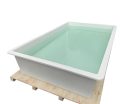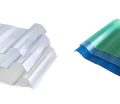
Fiberglass bass boats are popular for their durability and versatility, often used in freshwater fishing. However, using a fiberglass bass boat in saltwater presents unique challenges. Saltwater is more corrosive than freshwater, and exposure to it can lead to faster wear and tear, especially on the boat’s hull and engine components. Fiberglass boats are generally more resistant to damage compared to wooden or aluminum boats, but the salt can still cause significant issues, such as corrosion and biofouling. It’s important to consider factors like regular cleaning, the use of corrosion-resistant materials, and proper maintenance when operating a fiberglass bass boat in saltwater. Taking these steps ensures the boat remains in good condition and performs well in saltwater environments.
Fiberglass Bass Boat in Saltwater Cost
The cost of operating a fiberglass bass boat in saltwater involves multiple factors, including the purchase price, maintenance expenses, and necessary upgrades for saltwater use. These factors vary depending on whether the boat is new or used and the extent of customization required.
- Initial Costs for Saltwater Use
Purchasing a fiberglass bass boat in saltwater-ready condition can be more expensive due to additional features like corrosion-resistant hardware, saltwater-grade trolling motors, and durable hull coatings. Buyers must decide between a new, saltwater-specific model or a used boat that may require upgrades. - Upgrades for Saltwater Compatibility
Many standard bass boats designed for freshwater need modifications to withstand saltwater. Common upgrades include stainless steel fittings, improved bilge pumps, and sacrificial anodes. These upgrades enhance the boat’s resilience but add to the overall cost. - Saltwater Maintenance Expenses
Regular maintenance is critical to prevent saltwater damage. Cleaning, waxing, and replacing parts exposed to saltwater contribute to ongoing costs. While these expenses may seem small individually, they accumulate over time. - Storage Costs for Saltwater Boats
Protecting a fiberglass bass boat in saltwater environments often involves additional storage solutions. Covered storage, marina dry docks, or custom boat covers help shield the boat from saltwater exposure, adding to operational expenses. - Fuel Costs for Saltwater Trips
Navigating saltwater, especially in tidal areas or open waters, often requires more power, leading to higher fuel consumption. Efficient planning can help minimize these costs.
Investing in a fiberglass bass boat in saltwater requires understanding the balance between initial expenses and long-term benefits. Proper budgeting ensures the boat remains a valuable asset.
Best Features of a Fiberglass Bass Boat in Saltwater
Fiberglass bass boats are gaining popularity for saltwater applications due to their unique features and adaptability. These characteristics make them ideal for inshore and coastal waters.
- Shallow Water Maneuverability
A fiberglass bass boat in saltwater excels in navigating shallow waters. The lightweight design allows easy access to areas such as mangroves, estuaries, and flats, where larger boats cannot venture. - Customizable Configurations
These boats are highly versatile, allowing owners to install features like rod holders, live wells, and casting platforms. These additions cater to specific fishing needs, enhancing functionality. - Durability with Upgrades
When equipped with saltwater-resistant materials, fiberglass bass boats demonstrate remarkable durability. Protective coatings and stainless steel fittings ensure they can withstand harsh conditions. - Fuel Efficiency and Speed
The streamlined hull design of fiberglass bass boats reduces drag, providing excellent fuel efficiency and speed. This makes them suitable for covering long distances during saltwater excursions. - Multi-Purpose Use
Beyond fishing, a fiberglass bass boat in saltwater can be used for recreational activities like sightseeing or birdwatching, adding to its versatility.
These features highlight why fiberglass bass boats are becoming a preferred choice for saltwater enthusiasts.
Effects of Saltwater on Fiberglass Bass Boats
Saltwater environments present unique challenges for fiberglass bass boats. Understanding these effects and mitigating them ensures the boat’s longevity and performance.
- Accelerated Corrosion
Saltwater is highly corrosive to metal components like fittings, bolts, and the engine. Using stainless steel or anodized aluminum hardware and applying anti-corrosion sprays can minimize this impact. - Gelcoat Oxidation
The combination of saltwater and UV rays can cause the gelcoat to oxidize, leading to a dull or chalky appearance. Regular waxing and polishing protect the gelcoat and maintain its shine. - Electrical System Vulnerability
Saltwater exposure can damage electrical connections, leading to malfunctions. Sealing connectors and using marine-grade wires protect the system from moisture intrusion. - Hull Fouling
Marine organisms such as barnacles and algae can accumulate on the hull, reducing speed and fuel efficiency. Applying antifouling paint and regularly cleaning the hull prevents this issue. - Structural Stress
Operating a fiberglass bass boat in saltwater, especially in rough conditions, can subject the hull to stress. Inspecting for cracks and reinforcing weak points ensures structural integrity.
Addressing these effects promptly and proactively protects the boat from the harsh realities of saltwater environments.
Where to Find the Best Fiberglass Front Lever Bass Boat for Sale
How to Maintain a Fiberglass Bass Boat in Saltwater
Proper maintenance is essential to keep a fiberglass bass boat in saltwater performing well and looking its best.
Rinsing the boat thoroughly with fresh water after each trip is the first line of defense against salt residue. A high-pressure hose is ideal for removing salt from hard-to-reach areas like fittings, engines, and the hull.
Applying a protective wax coating helps shield the gelcoat from salt and UV damage. Choose a marine-grade wax specifically designed for fiberglass surfaces to enhance protection and extend the finish’s lifespan.
Inspecting the boat regularly for signs of corrosion, cracks, or damage is crucial. Pay special attention to fittings, the hull, and the engine components. Addressing minor issues promptly prevents them from escalating into costly repairs.
Using sacrificial anodes protects metal parts from galvanic corrosion. These anodes are designed to corrode in place of essential components, offering an additional layer of protection.
Storing the boat in a covered or dry location minimizes prolonged exposure to saltwater and humidity. If dry storage isn’t available, a high-quality boat cover provides essential protection.
By adhering to these maintenance practices, owners can ensure their fiberglass bass boat in saltwater remains a reliable and long-lasting vessel.
Benefits of Using a Fiberglass Bass Boat in Saltwater
Fiberglass bass boats are increasingly favored for saltwater use due to their adaptability and efficiency.
- Versatility in Inshore Waters
These boats are perfect for shallow coastal waters, offering access to fishing spots that larger vessels cannot reach. Their lightweight design enhances maneuverability. - Ease of Customization
Fiberglass bass boats can be outfitted with features like GPS systems, trolling motors, and live wells, making them highly functional for various saltwater activities. - Cost-Effectiveness
Despite the need for upgrades and maintenance, fiberglass bass boats often cost less to operate than heavier saltwater boats. Their fuel efficiency is a significant advantage for frequent users. - Durability with Proper Care
When maintained correctly, these boats demonstrate excellent resilience to saltwater. Upgrades such as stainless steel fittings and antifouling coatings ensure they last for years. - Improved Performance
The smooth, lightweight hull design reduces drag, resulting in better speed and handling in saltwater conditions.
These benefits make fiberglass bass boats an excellent choice for anglers and recreational users seeking a reliable and versatile saltwater vessel.
Where to Buy a Fiberglass Jet Bass Boat for Sale
Considerations for a Fiberglass Bass Boat in Saltwater
Using a fiberglass bass boat in saltwater offers exciting opportunities, but it requires a commitment to proper maintenance and upgrades. These boats excel in shallow and coastal waters, providing excellent performance and adaptability for various activities.
For those investing in a fiberglass bass boat in saltwater, balancing costs with long-term benefits is essential. Regular maintenance, timely upgrades, and careful storage ensure that the boat remains a valuable and enjoyable asset. With the right care, these versatile boats can thrive in the challenging saltwater environment, offering years of reliable service.
A fiberglass bass boat in saltwater offers a versatile and efficient option for anglers exploring coastal and inshore waters. These boats, traditionally designed for freshwater, have proven to perform well in saltwater when appropriately equipped and maintained. However, the unique challenges of saltwater environments require attention to specific factors, including the boat’s design, materials, and ongoing care.
Fiberglass construction provides several advantages, such as lightweight performance and durability. With proper modifications, such as saltwater-resistant fittings and protective coatings, these boats can navigate saltwater environments effectively. Understanding their capabilities and limitations ensures a safer and more enjoyable experience for boat owners.
Can a Bass Boat Go in the Ocean?
While primarily designed for freshwater, bass boats can handle saltwater environments under certain conditions. Their lightweight and streamlined construction make them suitable for inshore fishing or calm coastal waters, but they have limitations when it comes to the open ocean.
- Capabilities in Saltwater
A fiberglass bass boat in saltwater is effective for shallow and protected areas like bays, mangroves, and estuaries. The shallow draft allows access to areas that larger boats cannot navigate, making them ideal for targeting species like redfish or snook. - Key Factors to Consider
The boat’s size and hull design play a significant role in its saltwater performance. A wider beam provides better stability, while a well-powered engine ensures safe navigation in tidal currents. Additionally, modifications such as corrosion-resistant fittings and a saltwater-grade trolling motor are essential for long-term use. - Limitations in Open Waters
Bass boats are not designed for rough ocean conditions. Their low sides and lightweight hulls make them vulnerable to large waves and swells. Owners should avoid venturing too far from shore and monitor weather conditions carefully.
Bass boats can perform admirably in saltwater when used appropriately, but understanding their design and limitations is key to ensuring safety and enjoyment.
Best Fiberglass Bass Boats for Saltwater
Certain fiberglass bass boats are better suited for saltwater environments due to their design and features. Choosing the right model ensures durability, performance, and adaptability for saltwater fishing.
- Features for Saltwater Use
The best fiberglass bass boats for saltwater include features like a reinforced hull, corrosion-resistant hardware, and ample storage for fishing gear. Saltwater-specific bilge pumps and live wells are also valuable additions. - Advantages of Fiberglass Construction
Fiberglass is highly resistant to water and UV damage, making it an excellent choice for saltwater boats. Its lightweight nature improves fuel efficiency and maneuverability, while the smooth finish reduces drag in the water. - Top Models for Saltwater Performance
Selecting a fiberglass bass boat designed for versatility ensures compatibility with both freshwater and saltwater environments. Features like raised casting decks, trolling motors, and spacious layouts enhance functionality for inshore fishing. - Performance and Durability
The ability to navigate shallow waters while maintaining stability in mild waves makes fiberglass bass boats a reliable option for saltwater fishing. With proper maintenance, they can withstand the challenges of saltwater exposure.
By choosing the right fiberglass bass boat in saltwater conditions, anglers can enjoy a seamless transition between freshwater and coastal adventures.
Used Fiberglass Bass Boats in Saltwater
Purchasing a used fiberglass bass boat in saltwater conditions can be a cost-effective choice, but it requires careful inspection and consideration. Saltwater exposure can significantly affect the boat’s condition, making it essential to evaluate its durability and performance before purchase.
- Inspecting for Saltwater Damage
Look for signs of corrosion on metal fittings and hinges, as saltwater accelerates rust. Examine the hull for cracks, discoloration, or delamination caused by prolonged exposure. Inspecting electrical systems for saltwater intrusion is equally important. - Evaluating Structural Integrity
Check the boat’s transom, deck, and hull for structural issues. A professional survey can provide insights into hidden damage that might compromise the boat’s performance. - Cost Considerations
While used boats are often more affordable, additional costs for repairs and upgrades should be factored in. Upgrading components like trolling motors and bilge pumps may be necessary to ensure compatibility with saltwater. - Choosing a Trusted Seller
Purchasing from a reliable dealer or individual with maintenance records ensures transparency about the boat’s history. At GangLong Fiberglass, we take pride in offering well-maintained used fiberglass bass boats tailored for saltwater use.
Carefully inspecting a used fiberglass bass boat in saltwater conditions helps buyers make informed decisions and avoid unexpected expenses.
Bass Boat for Redfish
Redfish, or red drum, are a popular target for saltwater anglers, and a fiberglass bass boat is an excellent choice for pursuing this species. These boats’ versatility and shallow-water capabilities make them ideal for redfish fishing in coastal areas.
- Why Fiberglass Bass Boats Work for Redfish
The shallow draft allows anglers to access flats and estuaries where redfish are commonly found. Fiberglass construction ensures durability in the brackish and saltwater environments that redfish inhabit. - Essential Features for Redfish Fishing
A fiberglass bass boat in saltwater should include features like a trolling motor for quiet maneuvering, rod holders for convenience, and a spacious casting deck for better visibility. Live wells and insulated coolers are also useful for keeping bait fresh and storing catches. - Best Setups for Redfish Anglers
Setting up the boat with GPS navigation systems and fish finders improves efficiency when locating redfish. A raised platform enhances sight fishing, while power poles provide stability in windy conditions.
Fishing for redfish with a fiberglass bass boat in saltwater highlights the boat’s adaptability and efficiency in inshore fishing scenarios.
Saltwater Bass Boat Maintenance
Maintaining a fiberglass bass boat in saltwater is essential to preserve its performance, safety, and appearance. Saltwater’s corrosive nature demands extra attention to ensure the boat remains in optimal condition.
- Flushing the Engine
After every saltwater outing, flushing the engine with fresh water removes salt deposits that can corrode internal components. This practice extends the engine’s lifespan and improves performance. - Cleaning the Hull and Deck
Thoroughly rinse the boat with fresh water and use marine-safe cleaners to remove salt and grime. Waxing the gelcoat regularly creates a protective barrier against UV rays and saltwater exposure. - Replacing Sacrificial Anodes
Sacrificial anodes protect metal parts from galvanic corrosion. Inspect and replace them as needed to ensure ongoing protection for the engine and other metal components. - Inspecting Electrical Systems
Saltwater can damage wiring and connectors. Check for signs of corrosion and apply dielectric grease to prevent moisture intrusion. - Protecting Against Rust and Corrosion
Use anti-corrosion sprays on metal fittings, hinges, and fasteners. Stainless steel components offer better resistance to rust and should be considered for long-term saltwater use.
Consistent maintenance practices ensure that a fiberglass bass boat in saltwater remains reliable, efficient, and visually appealing over time.
Why Fiberglass Jon Boat to Bass Boat Conversions Are Popular
FAQs about Fiberglass Bass Boat in Saltwater
Not all boat motors are designed for use in saltwater, and it’s important to check the specifications before exposing them to such conditions. Motors that are not specifically made for saltwater environments can suffer significant corrosion and damage over time due to the presence of salt. Freshwater motors, for example, are usually built with materials that aren’t resistant to saltwater corrosion. On the other hand, saltwater-specific motors are designed with corrosion-resistant materials, such as stainless steel, bronze, and special coatings that help protect against the harsh elements of saltwater. Even if you use a saltwater-rated motor, it’s essential to flush the motor with fresh water after each use to remove salt deposits and maintain its functionality. Regular maintenance, including checking for signs of corrosion and using corrosion inhibitors, will extend the motor’s life. Therefore, while some motors can be used in saltwater, it’s essential to ensure that the motor is designed and treated to withstand the corrosive effects of saltwater.
Bass, particularly species like the striped bass, can thrive in both freshwater and saltwater environments. These fish are known for being “diadromous,” meaning they can migrate between freshwater and saltwater. Striped bass, for instance, spawn in freshwater but often migrate to the ocean for feeding. Other species of bass, like the largemouth bass, are typically found in freshwater, but they are not naturally suited to saltwater environments. Saltwater poses significant challenges for freshwater species like largemouth bass due to the salinity levels, which affect their ability to regulate their internal salt balance. However, certain bass species, like striped bass and black bass, have adapted over time to the varying salinity levels in their environments. In general, while bass can live in saltwater under certain conditions, it’s mainly the saltwater-adapted species that thrive in these habitats.
The lifespan of a boat in saltwater largely depends on the type of boat, the materials it’s made from, and how well it’s maintained. Boats in saltwater environments generally face more challenges due to the corrosive nature of saltwater, which accelerates wear and tear on both the boat’s hull and engine. A fiberglass boat, when properly maintained, can last for 20-30 years, but saltwater exposure can reduce its lifespan without regular cleaning, maintenance, and care. For metal boats, particularly those made of aluminum or steel, saltwater can lead to corrosion, reducing their lifespan significantly unless they are properly coated or treated to resist saltwater damage. Regular cleaning, including flushing out saltwater from the engine and rinsing off the hull, can extend a boat’s life in saltwater. Protective coatings, such as anti-corrosion treatments, can also help prevent saltwater damage and significantly increase the longevity of a boat used in saltwater.

As the editor of GangLong Fiberglass, I have years of experience and in-depth research, focusing on cable tray products, fiberglass solutions, and grille systems. I incorporate years of industry insights and practical experience into every content, committed to promoting the progress of the industry. At GangLong Fiberglass, my commitment is reflected in every product, from innovative cable trays to durable fiberglass solutions and sturdy grille systems. As an authoritative voice in the industry, my goal is to provide valuable information to professionals and businesses and promote forward-looking solutions.


